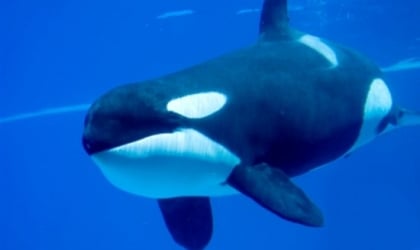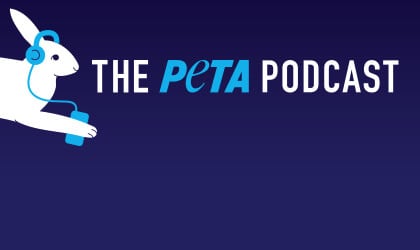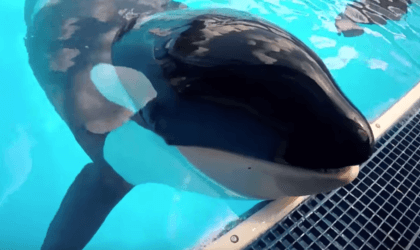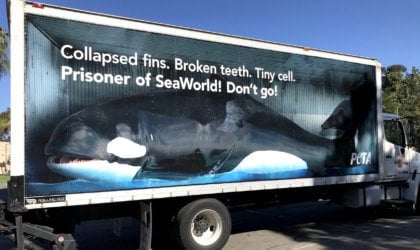Do you know how many dolphins have died at SeaWorld’s parks? Hundreds. Bossa, Lily, and Puka are only three of the nearly 300 dolphins whose tragic lives have come to a tragic end at the abusement parks, but their stories are enough to make anyone demand that SeaWorld stop breeding dolphins and instead send them to seaside sanctuaries.
Bossa
Bossa never got to feel the cool ocean breeze on her dorsal fin or experience the bliss of exploring 60 miles of open ocean every day—instead, in 1997, she was born at SeaWorld Orlando, doomed to captivity in concrete tanks.
In 2006, she was transferred from SeaWorld Orlando to Discovery Cove, another SeaWorld-operated abusement park in the same city. There she gave birth to her first calf—a stillborn who never had the chance to bond with her. She was then shuffled back to SeaWorld Orlando, where she gave birth to her second calf, Haley.
On April 21, 2014, Bossa went into labor for the third time, giving birth to her second stillborn. The stillbirth caused Bossa major trauma, and she died just a few days later, officially from a uterine rupture with acute peritonitis.
Lily
Unlike Bossa, Lily was born where all dolphins should be born: in the ocean. But she was robbed of the life she deserved—in 1983, she was torn away from her family and ocean home and sold into captivity. She was shipped around to various aquariums and eventually taken to SeaWorld Orlando in 1992 and then to Discovery Cove in 2016. During her more than 20 years of imprisonment at SeaWorld parks, she was bred repeatedly and gave birth to six babies. It’s likely that she was sexually abused and forcibly impregnated to create generation after generation of animals suffering in small tanks—a practice that the company continues today.
Lily’s first baby—a girl—was born in 1994, but she died at only a day old from trauma she sustained after being thrown out of her pool by another dolphin. Lily’s next calf died at only 16 days old. She then gave birth to three more babies, including Tiger in 2000—below, the two are shown being made to perform tricks in chemically treated water for a reward of dead fish. Her last baby, Lagos, died of pneumonia and sepsis when he was 8 years old.
In 2017, roughly three years after the video above was taken, Lily died—she was euthanized for oral cancer, which she had been diagnosed with in 2010.
Puka
Between the age of 7 and her death at roughly 29 years old, Puka—born at SeaWorld San Diego in 1982—was impregnated again and again, giving birth to nine calves in captivity, five of whom are dead now, too.
In 1987, when she was just 5 years old, SeaWorld shipped her from San Diego to the now-defunct SeaWorld Ohio park in Cleveland.
Ten sensitive and intelligent dolphins died after suffering in small chemically-treated tanks at the now defunct #SeaWorld Ohio.
So we're asking the company currently building on the site to put up a memorial in their honor. https://t.co/GeQl1YspvG
— PETA (@peta) November 14, 2020
There, in 1990, Puka gave birth to her first calf, Aurora, who died just a week after being born. Three years later, Puka was shipped across the country again, this time to SeaWorld San Antonio. Her second calf, Kelly, died of pneumonia at 7 years old. Her third calf, who SeaWorld apparently couldn’t even be bothered to name, died at 6 years old. Rio, her seventh calf, died at a year old. Her ninth and final calf also died young and was never even named.
In 2011, after her final pregnancy, Puka reportedly died of acute intestinal volvulus, a condition in which the intestines become twisted and stop working. Her four remaining offspring—Ripley, Fathom, Sadie, and Cisco—are still being held captive by SeaWorld.
*****
Bossa, Lily, Puka, and their dead babies were let down in every way possible—it’s too late for SeaWorld to do right by them, but the company can still do something right.
At SeaWorld parks, dolphins (and whales) are still being forcibly bred, sometimes after being drugged. In nature, these animals maintain dynamic relationships within large social networks, choose their own partners, and swim freely in huge expanses of ocean. But at SeaWorld, they’re treated as props and sexually abused.
Tell SeaWorld how you really feel about its treatment of dolphins and others—urge it to stop breeding dolphins and whales and to move the long-suffering captive marine mammals to seaside sanctuaries:




